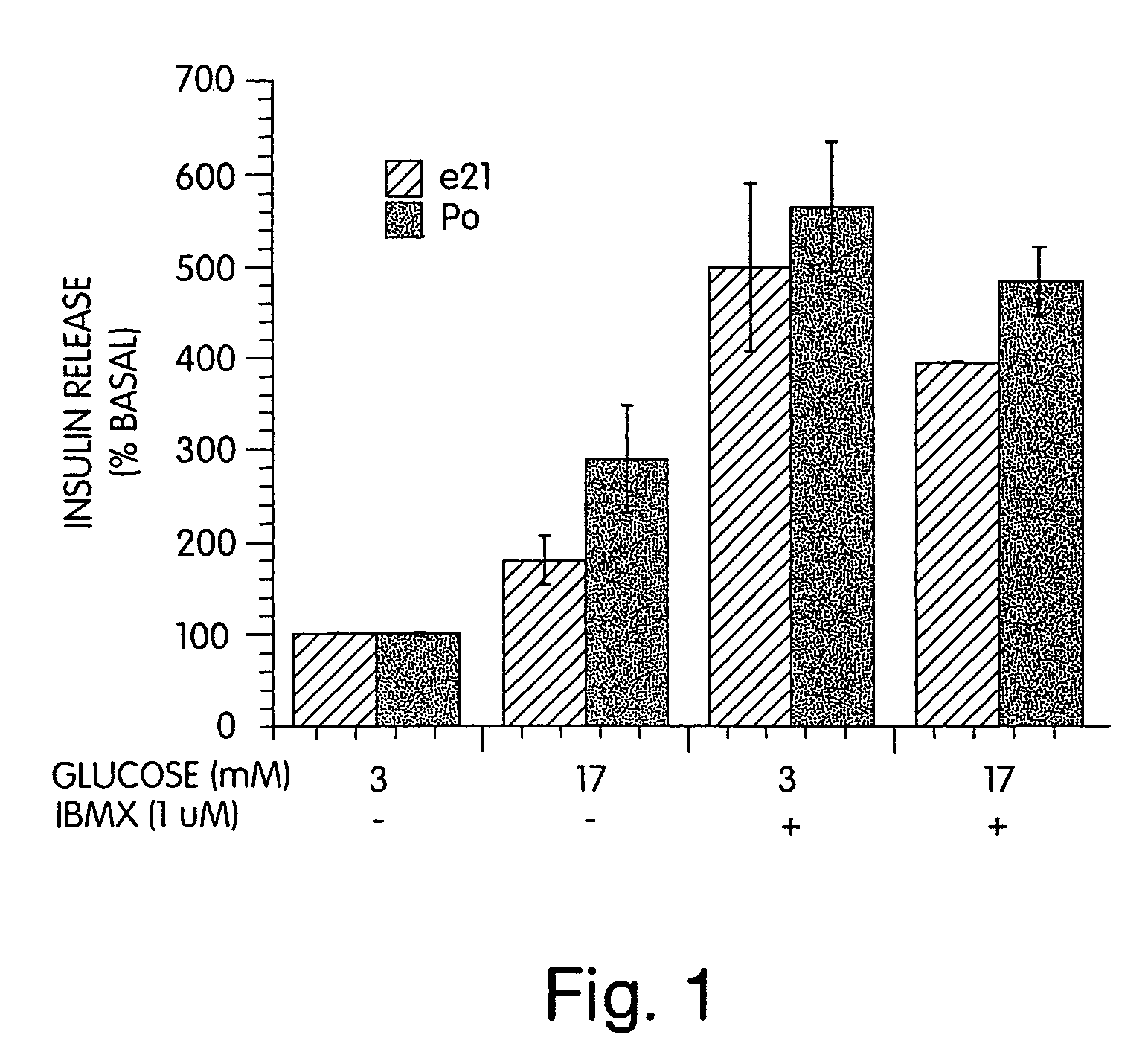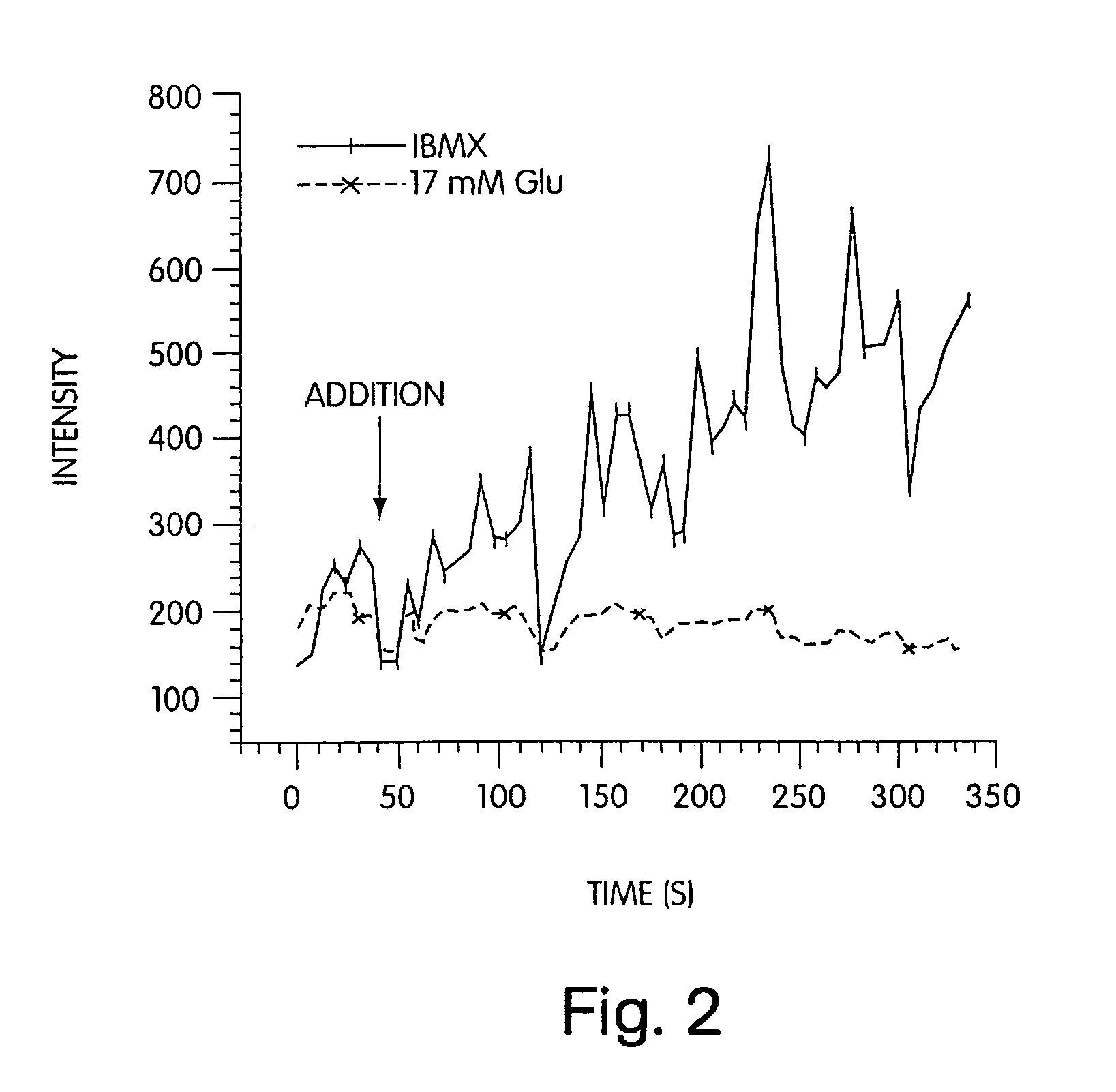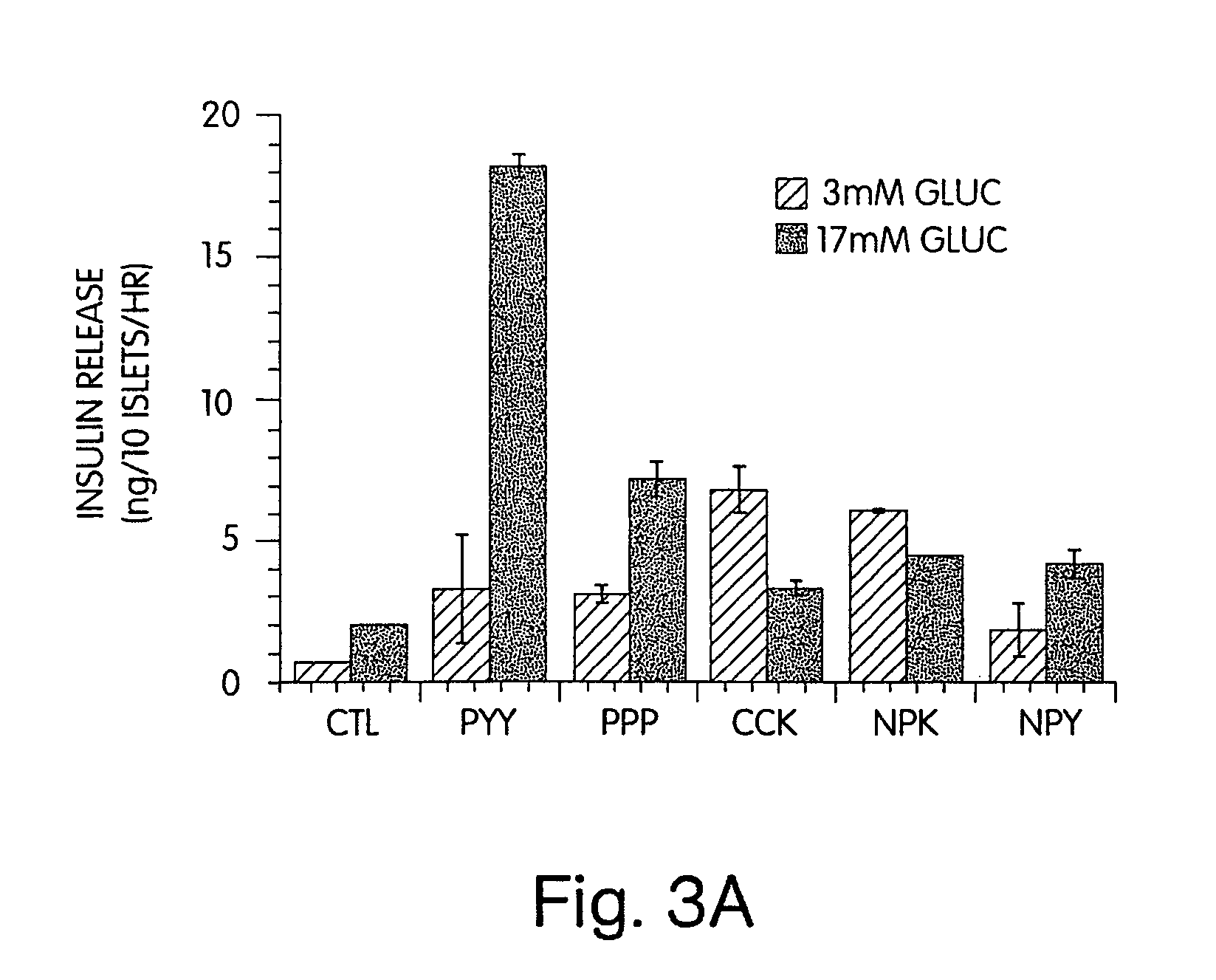Methods and reagents for treating glucose metabolic disorders
a glucose metabolic disorder and reagent technology, applied in the field of glucose metabolic disorder therapies, can solve the problems of indirect costs, reduced glucose responsiveness, and reduced glucose responsiveness, and achieve the effects of enhancing glucose responsiveness, recovering glucose responsiveness, and indubitable glucose responsiveness
- Summary
- Abstract
- Description
- Claims
- Application Information
AI Technical Summary
Problems solved by technology
Method used
Image
Examples
example 1
Islet Isolation and Culture
[0232]Intestine-derived hormone peptides including PP, NPY, NPK, PYY, secretin, GLP-1 and Bombesin were purchased from Sigma. Collagenase type XI was obtained from Sigma. RPMI 1640 culture medium and fetal bovine serum were obtained from Gibco. A radioimmunoassay kit containing anti-insulin antibody ([125I]-RIA kit) was purchased from Linco, St Louis.
[0233]Post-partem rat islets were obtained from P-02 year old rats. Adult rat islets were obtained from 6-8 week old rats. Fetal rat islets were obtained as follows. Pregnant female rats were sacrificed on pregnancy day e21. Fetuses were removed from the uterus. 10-14 pancreata were dissected from each litter and washed twice in Hanks buffer. The pancreas were pooled, suspended in 6 ml 1 mg / ml collagenase (Type XI, Sigma) and incubated at 37° C. for 8-10 minutes with constant shaking. The digestion was stopped by adding 10 volumes of ice-cold Hanks buffer followed by three washes with Hanks buffer. The islets ...
example 2
IBMX Stimulated Calcium Influx in e21 Islets
[0234]E21 islet were isolated and cultured according to Example 1. Islets were then treated with 17 mM glucose or 1 μM IBMX in 3 mM (low) glucose (FIG. 2). Non-glucose responsive e21 islets did not experience a rise in intracellular calcium influx upon the addition of high glucose. The addition of IBMX induced a calcium influx, suggesting that the mechanism of IBMX that stimulated insulin release in e21 islets also utilizes activation of calcium channels. This further suggests that the gain of glucose responsivity observed in P0 islets occurs upstream of the calcium channel.
example 3
PYY Induces the Maturation of Fetal Islets
[0235]Fetal rat islets were isolated as in Example 1. E21 fetal islets were cultured for 5 days in the presence of 200 ng / ml PYY, PPP, CCK, NPK, NPY, Secretin, GLP-1 or Bombesin. Glucose-stimulated insulin release was then measured in each culture group (FIGS. 3A and 3B). PYY significantly stimulated the ability of the islets to respond to glucose by secreting insulin. Related peptides such as PPP and NPY, which share approximately 70% amino acid homology, did not stimulate gain of glucose responsivity.
EXAMPLE 5
The Effect of PYY on e21 Islets is Time Dependent
[0236]Fetal rat islets were isolated as in Example 1. E21 islets were then cultured for 2, 5 or 7 days with 200 ng / ml PYY. Glucose-stimulated insulin release was then measured in each culture group (FIG. 4). The control group showed a slight gain of glucose responsivity after 5 days in culture compared to the time 0 and 2 day time points (triangles), as measured by insulin release. The ...
PUM
| Property | Measurement | Unit |
|---|---|---|
| diameter | aaaaa | aaaaa |
| body weight | aaaaa | aaaaa |
| time | aaaaa | aaaaa |
Abstract
Description
Claims
Application Information
 Login to View More
Login to View More - R&D
- Intellectual Property
- Life Sciences
- Materials
- Tech Scout
- Unparalleled Data Quality
- Higher Quality Content
- 60% Fewer Hallucinations
Browse by: Latest US Patents, China's latest patents, Technical Efficacy Thesaurus, Application Domain, Technology Topic, Popular Technical Reports.
© 2025 PatSnap. All rights reserved.Legal|Privacy policy|Modern Slavery Act Transparency Statement|Sitemap|About US| Contact US: help@patsnap.com



